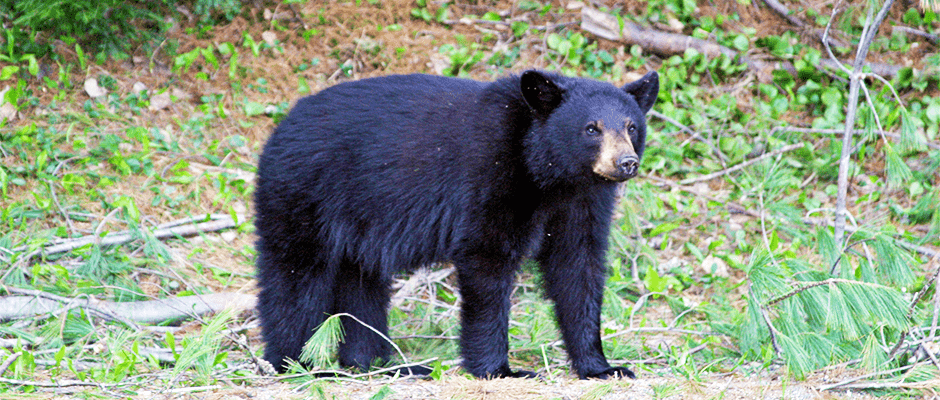Share this article
Student Research project: Bears are wary in Connecticut
Black bears tend to stay away from roads and houses in Connecticut suburbs during important periods of their lives, according to new research.
Michael Evans discussed findings from his University of Connecticut PhD dissertation on black bears (Ursus americanus) at last year’s annual TWS conference in Raleigh, N.C., where he won first place in the PhD category in the student progress awards.
The black bear population he studied recolonized in the last 20 to 30 years is showing up more frequently in populated neighborhoods, Evans said. As bear populations expand throughout the United States, they have already become habituated to humans in some states, like New Jersey and Florida, Evans said, but in places like Connecticut and North Carolina, these habituations can likely be prevented.
“In Connecticut, bears have become a microcosm of what’s going on with black bears across North America,” he said.
Working with the Connecticut Department of Energy and Environmental Protection, Evans reviewed three years’ worth of GPS data from 23 radio-collared black bears in suburban areas. The collars tracked the bears’ location hourly, allowing him to “understand how bears are actually making movement decisions to navigate through these suburban and developed landscapes,” he said.
Evans wanted to understand not only where the bears went but what decisions they made that took them there. He found that bears with dependent cubs were more likely than other bears to avoid roads and houses. He also found bears getting ready to put on fat and go into their dens were warier.
Bears in the suburbs often seem acclimated to humans, Evans said, but the ones he studied see risks among roads and houses. “This means there are opportunities in Connecticut and other places like that to maintain that wariness and not let the population become habituated,” he said.
Evans urged education programs to discourage the public from letting bears get into garbage cans and birdfeeders. And he said managers need to realize that not all bear populations will act the same.
“We should understand which portions of the population we’re managing,” he said.
Evans said he hopes his award-winning research can change management of bears in suburban areas. “I was surprised and pretty honored and proud of the work,” he said. “I was glad other people thought it was meaningful and well done.”
Header Image: A black bear at the Moosehorn National Wildlife Refuge in Maine. ©U.S. Fish and Wildlife Service








